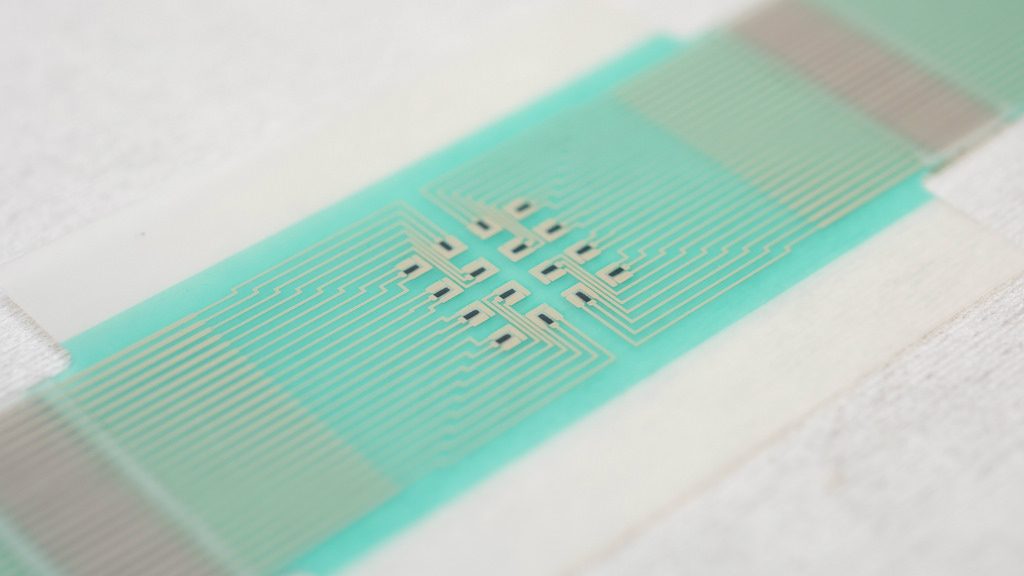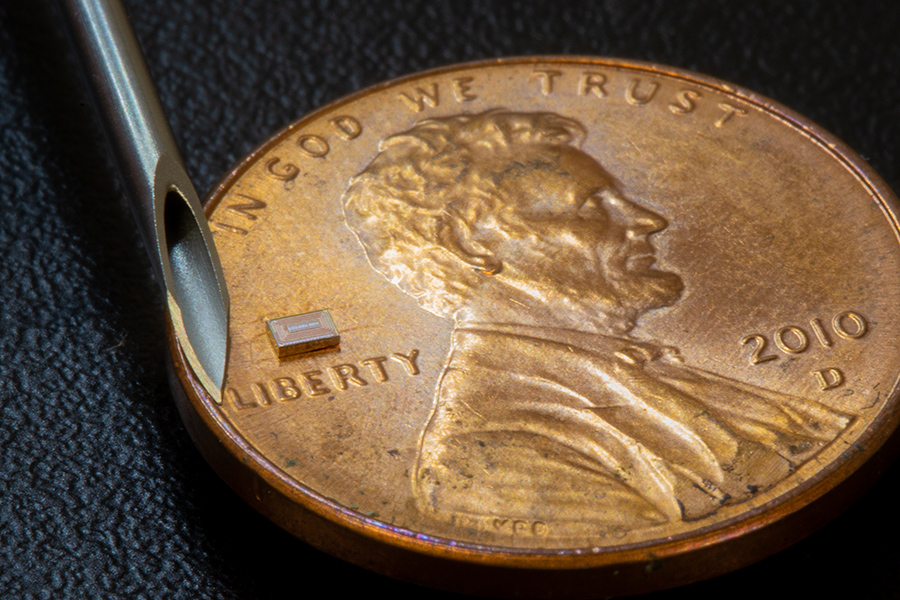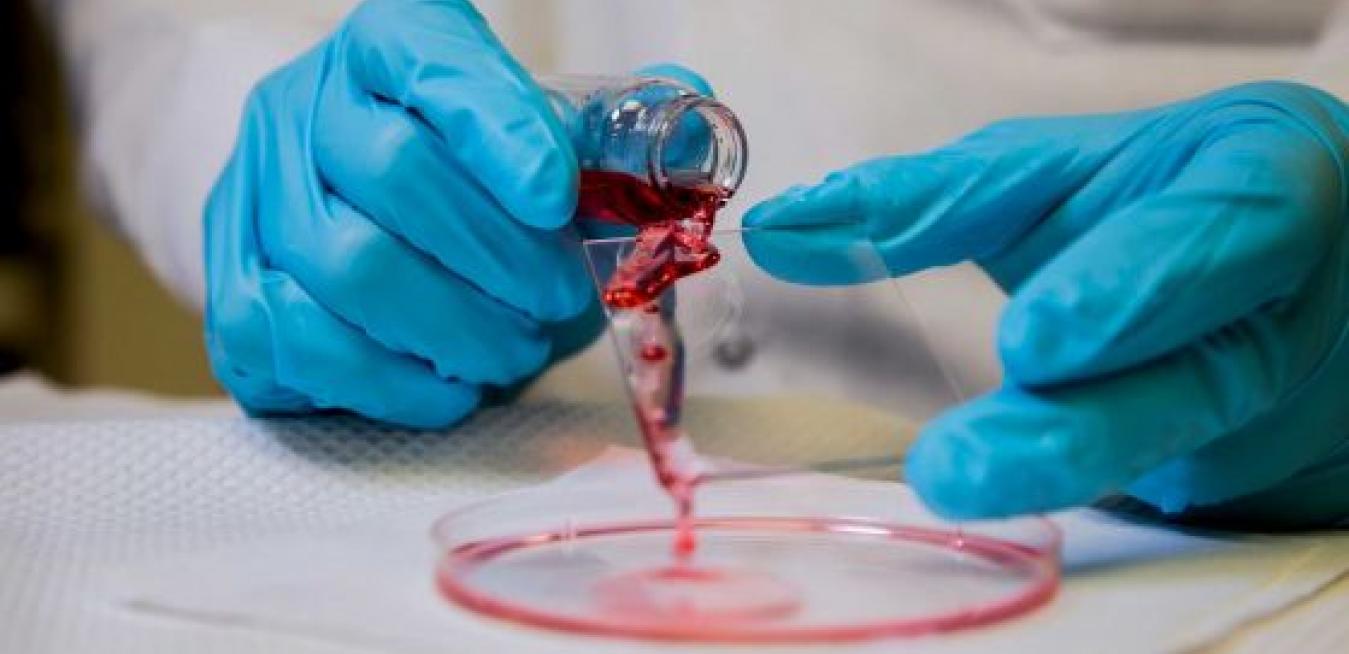There Won’t Be Blood
 The university called the device a “bloodless revolution in diabetes monitoring.” Image credit: University of Bath.
The university called the device a “bloodless revolution in diabetes monitoring.” Image credit: University of Bath.What is it? Researchers at the University of Bath in the U.K. have developed a graphene bracelet that could be used to measure glucose levels through the skin. The university called the device a “bloodless revolution in diabetes monitoring.”
Why does it matter? Diabetes patients must periodically check their blood sugar levels to manage the disease. Richard Guy, professor at the university’s Pharmacy and Pharmacology Department, said that the closest thing to “a non-invasive — that is, needle-less — method” to monitor blood sugar “has required either at least a single-point calibration with a classic ‘finger-stick’, or the implantation of a pre-calibrated sensor via a single needle insertion.” He called the new monitor “an essential contribution in the fight to combat the ever-increasing global incidence of diabetes.”
How does it work? The university reported that the device “draws glucose out from fluid between cells across hair follicles, which are individually accessed via an array of miniature sensors using a small electric current. The glucose collects in tiny reservoirs and is measured.” It can deliver readings every “every 10 to 15 minutes over several hours.” The sensor includes components made from graphene, a two-dimensional wonder material made from carbon atoms. The team has successfully tested the device on pig skin and on healthy human volunteers.
An AI For An Eye
 The FDA just approved the marketing of a new device that uses AI to search for early warning signs of retinopathy. Images credit: Getty Images.
The FDA just approved the marketing of a new device that uses AI to search for early warning signs of retinopathy. Images credit: Getty Images.What is it? For people with diabetes, high blood-sugar levels can lead to something called diabetic retinopathy — damage to the blood vessels of the retina that may cause vision loss and even blindness. The FDA just approved the marketing of a new device that uses AI to search for early warning signs of retinopathy.
Why does it matter? Fifty percent of people with diabetes don’t make an annual visit to the eye doctor — meaning signs of retinopathy can go unnoticed. The new device, called IDx-DR, can be used in primary care doctors’ offices. And because it sends results to the cloud for analysis, it’s the first device approved for use that “provides a screening decision without the need for a clinician to also interpret the image or results,” according to a press release from the FDA.
How does it work? The device “is a software program that uses an artificial intelligence algorithm to analyze images of the eye taken with a retinal camera,” says the FDA. A primary-care doctor sends the images to a cloud server, which returns one of two results: “more than mild diabetic retinopathy detected: refer to an eye care professional” or “negative for more than mild diabetic retinopathy; rescreen in 12 months.” The device got the go-ahead after a clinical trial involving 900 diabetic patients; the IDx-DR was able to detect “more than mild” diabetic retinopathy correctly 87.4 percent of the time, and came up with proper negative assessments in 89.5 percent of cases.
Oil Bugs
 Professor Satinder Kaur Brar at the Environmental Biotechnology Laboratory. Image credit: NISR.
Professor Satinder Kaur Brar at the Environmental Biotechnology Laboratory. Image credit: NISR.What is it? A team at Canada’s National Institute of Scientific Research found a bacterium “that feeds on hydrocarbons.” The researchers led by professor Satinder Kaur Brar discovered that the bacteria, Alcanivorax borkumensis, produces an enzyme that degrades petroleum-based products in soil and water.
Why does it matter? Brar reported that the process was “effective in removing benzene, toluene, and xylene, and has been tested under a number of different conditions to show that it is a powerful way to clean up polluted land and marine environments.”
How does it work? NISR reported that during its evolution, the bacterium “has accumulated a range of very specific enzymes that degrade almost everything found in oil.” When they extracted and tested some of the enzymes, they found that “the degradation of hydrocarbons” was “really encouraging and reached over 80 percent for various compounds,” Brar said.
Tiny Biosensor For Alcohol
 The size of the alcohol monitoring chip compared to a penny and a 16 gauge needle. Image credit: University of California San Diego.
The size of the alcohol monitoring chip compared to a penny and a 16 gauge needle. Image credit: University of California San Diego.What is it? Researchers at the University of California San Diego have developed a tiny body implant smaller than a grain of rice that can monitor alcohol level in the blood.
Why does it matter? “The ultimate goal of this work is to develop a routine, unobtrusive alcohol and drug monitoring device for patients in substance abuse treatment programs,” said Drew Hall, an electrical engineering professor at the UC San Diego Jacobs School of Engineering, who led the project.
How does it work? The university reported that the implant “can be injected under the skin in interstitial fluid—the fluid that surrounds the body’s cells.” The device contains a sensor “coated with alcohol oxidase, an enzyme that selectively interacts with alcohol to generate a byproduct that can be electrochemically detected.” It transfers the information wirelessly to a smartwatch, which also powers the device. “This is a proof-of-concept platform technology. We’ve shown that this chip can work for alcohol, but we envision creating others that can detect different substances of abuse and injecting a customized cocktail of them into a patient to provide long-term, personalized medical monitoring,” Hall said.
Omniphobia — It’s A Good Thing
[embed width="600"]https://www.youtube.com/watch?v=JeEV7x3iuSQ[/embed]
What is it? Anish Tuteja, a materials scientist at the University of Michigan, created a “smooth, durable, clear coating” for phones and other devices that’s described as “omniphobic” — that is, it repels most everything it comes into contact with, including “just about every known liquid,” and also peanut butter.
Why does it matter? Don’t make us cite the stats on how disgusting your phone is — as items that everyone touches constantly, smart devices are receptacles for grease, grime and germs that we also happen to carry on our bodies at all times. Tuteja’s technology also can protect frequently begrimed surfaces such as countertops, camera lenses and “countless other everyday items,” according to a University of Michigan news release. Tuteja said that because he has a 2-year-old at home, the project “was about more than just the science” — but the material will be good for more than just child-proofing. Applied to fields like refrigeration, “the new coating could enable equipment to slough off condensed water and chemicals more quickly, increasing efficiency by up to 20 percent.”
How does it work? The key is was “partial miscibility” — that is, the ability of two substances to mix well together. In the past, materials scientists have made discoveries by mixing substances together and seeing what results. Today Tuteja’s team is able to rely on a “vast library of substances” whose properties have been previously mapped, enabling them to “mathematically predict how any two will behave when they’re combined,” according to the university. “This enables them to concoct a nearly endless variety of combinations with very specifically tailored properties.” For the omniphobic surface, they needed something that would come out clear, repel oils and alcohols, and stick to a range of substrata. They came up with “a mix of fluorinated polyurethane and a specialized fluid-repellent molecule called F-POSS.” Because fluorinated polyurethane is inexpensive, Tuteja expects that his omniphobic material — which can be dipped, sprayed or brushed on — can be scaled up into an affordable product.
Top image credit: Mathew Boban, Graduate Student Research Assistant, Materials Science and Engineering, pours hexadecane oil onto a glass slide with a superomniphobic coating. The petroleum based, highly viscous lubricant slide easily off the slide, opening up applications like self-cleaning windows, ink jet printers and microfluidic devices. Image credit: Robert Coelius, Michigan Engineering.





